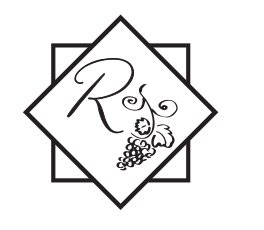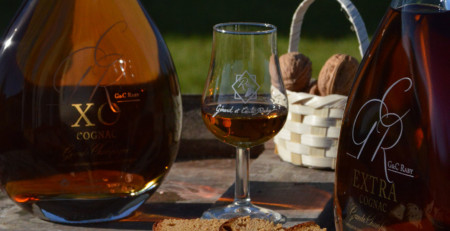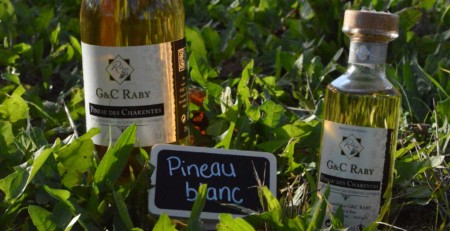L’YBAR: a cognac-based liqueur
What is a liqueur?
A liqueur is a drink produced by flavouring an alcoholic base with vegetable products, water and sweet products such as sugar, caramel or honey. The alcohol content of this spirit varies between 15 and 55 degrees. A liqueur is a spirit drink with a sugar content of 100 grams per litre. Liqueur is therefore an alcoholic and sweet drink, which is not produced by fermentation. It is therefore not like wine.
The sugar content of a liqueur varies from one country to another, depending on the level allowed by law in the country. In France, since 1908, the minimum sugar content of a liqueur is 100 grams per litre. There is an exception for what are called creams. A cream is a liqueur with a high sugar content. To be a cream, the liqueur must meet two conditions: have an alcohol content of at least 15 degrees and a sugar content of at least 250 grams per litre. There is an exemption for blackcurrant liqueur, which has a sugar content of 400 grams per litre.
How to make a liqueur?
The choice of basic products is of great importance in the making of a liqueur. The choice of alcohol is essential. This choice is very wide, as liqueurs can be made from neutral alcohol, but also from alcohol such as gin, whisky or cognac.
There are three different extraction methods. The choice of extraction depends on the nature of the raw material and the type of flavour desired.
– Infusion extraction consists of soaking the raw material in water for several days, while maceration consists of soaking it in alcohol. The maceration period can last from 24 hours to several months. Following this, we obtain a juice, called infusion, which is the basis for making a liqueur. A solid part remains: the marc, which is pressed and added to the infusion.
– Extraction by percolation allows the herbs and plants to come into contact with the alcohol under pressure.
– Hot extraction, through distillation, involves the blending of alcohol with fruits, plants and spices in a copper pot still. Following this distillation, only the heart of the spirit is retained. The liqueurs obtained by distillation are seed liqueurs such as anisette, bark liqueurs and plant liqueurs such as mint liqueur.
The final step in the production of a liqueur is the addition of sugar. The liqueur can then be aged for months or even years in vats, barrels or oak casks. Depending on the needs, a blend can be made. We can add sugar, water or alcohol. Colouring agents can also be added if the colour is deemed insufficient by the producer. The liqueur is then filtered and bottled.
Let’s go back in time
The first liqueurs date back to the Middle Ages and appeared after the arrival of the alambic and consequently after the discovery of eau de vie. One of the first inventors of the liqueur was Arnaud de Villeneuve, rector of the Faculty of Medicine in Montpellier. In the 13th century, this man made a series of herbal and medicinal wines. Thanks to the alambic, Arnaud de Villeneuve popularised the distillation of alcohol.
In the 14th century, liqueurs were made in monasteries in France for therapeutic purposes. They were made from wine, honey, plants or plants roots, but also from fruit. Over time, distillation techniques evolved and made it possible to preserve the liqueurs better.
At the time, apothecaries sought to relieve pain with liqueurs. They were constantly looking for the virtues of this drink.
How are liqueurs consumed?
There are many ways of consuming liqueurs. Indeed, a liqueur can be drunk neat, with water, with fruit juice, on the rocks, in cocktails or with sparkling spirits. If you decide to drink a liqueur neat, remember to put it in the fridge so that it is served chilled.
Liqueurs are very popular in cooking. They go well with desserts, such as cakes, but also with ice cream or sorbets. Liqueurs such as Grand Marnier, Cointreau or Chartreuse are very popular in pastries. Cointreau, a liqueur made from orange peel, is perfect in a chocolate dessert, for example.
A liqueur is a spirit that is constantly evolving. In recent years, we have seen the rise of traditional liqueurs in cocktails bars but also with mixologists. Liqueurs bring a special flavour to cocktails.
The liqueurs of the Maison Raby
Our house offers a range of six liqueurs of the YBAR brand. Why this name? If you look closely, you will see that this brand simply forms the name Raby in reverse. All our liqueurs are made from cognac, natural flavours and cane syrup.
Our Litchi, Rose, Ginger and Orange, Cherry, Chili liqueurs are our own creations. They are unique. These liqueurs can be drunk on their own or in cocktails and can be enjoyed with sparkling wine. Our company has chosen to add food colouring to these two liqueurs to give them a beautiful colour.
Our Litchi, Rose, Ginger liqueur is 17% alcohol. It has a nice bright pink colour. When tasting our liqueur, you will be able to feel the intensity of the litchi married to the sweetness of the rose offering a delicate palate followed by a lemony note.
Our Caramel Cream liqueur is also 17% alcohol. It is composed of salt flower from the Ile de Ré, cognac and milk. Our liqueur could be compared to Baileys, a liqueur with a base of Irish whiskey and cream. This liqueur is very smooth in the mouth. On the nose, you can smell the caramel candy!
Our Orange, Cherry, Chili liqueur has an alcohol content of 24 degrees. It has a nice bright purple colour. On the palate, you will feel the richness and intensity of the fruit, followed by a hint of spice that will enhance everything.
Our Pear and Almond liqueurs are also 24 degrees of alcohol. They are both straw yellow in colour. Our Pear and Almond liqueurs are very smooth in the mouth and let the richness of the fruit shine through.
Our Orange liqueur has an alcohol content on 40 degrees and is golden yellow in colour. It offers the richness of ripe orange with a spicy note.
If you are a cocktail lover, you can find our Raby By Flair Room cocktail menu on our website www.cognac-raby.com. We offer five cocktails from our liqueurs: Litchi, Rose, Ginger; Caramel Cream, Orange, Cherry, Chili; Pear and Orange.
You can discover all our liqueurs in our shop or on our website www.cognac-raby.com. To find out more about the making of our liqueurs and our other products, come and see us at 3 Bis Route de la Brée, in Segonzac. We will welcome you in our shop where you will be able to discover our whole range of products, our VS, VSOP, XO and EXTRA cognacs, our Charentais country wines, our Pineaux des Charentes, our grape juices and our liqueurs. Our shop is open without appointment from Monday to Friday from 9am to 12pm and from 2pm to 6pm.
We also offer a free visit to the heart of the history of double distillation. You will discover all the stages in the production of cognac, the history of the Raby family, the distillation with the Charentais stills and the storage of the eaux de vie. Through this visit, you will feel the passion of Gérard Raby and his daughter Cécile for their profession. If you are interested in visiting our property, you can book your visit online at www.ruedesvignerons.com. We offer tours from Monday to Saturday at 10.30am and 3.30pm, in French and English.
If you are unable to visit our beautiful region, don’t worry we have a solution! We offer an online sales service, where you will find our entire range of products.





